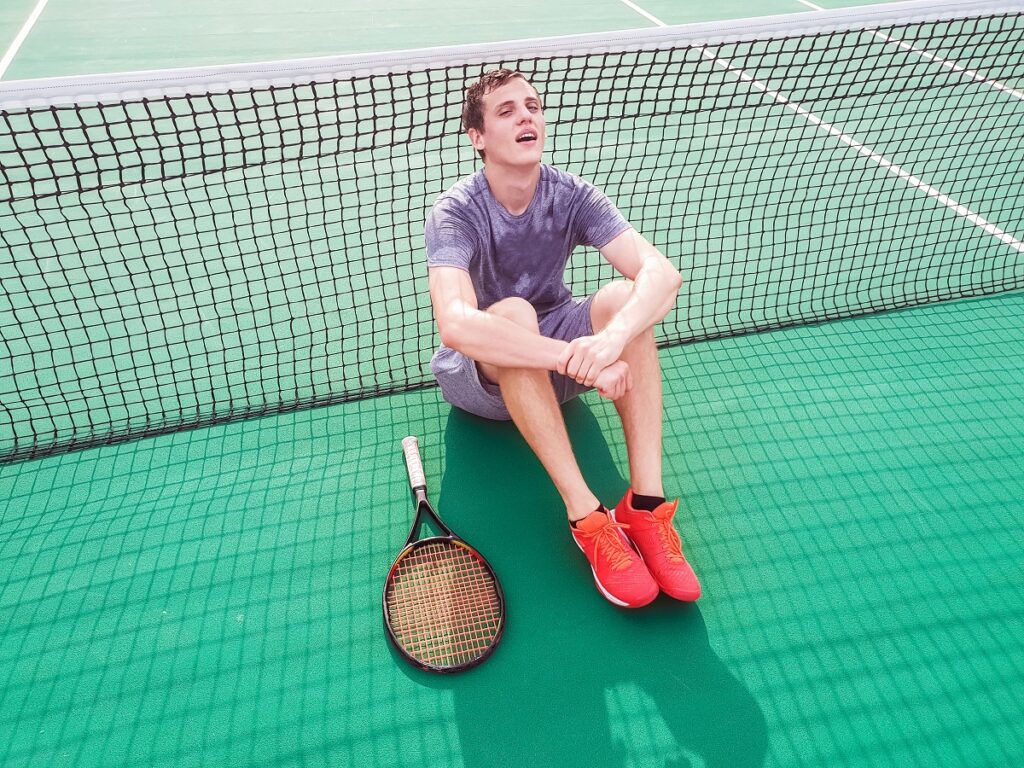Are You At Your Wit’s End Playing Tennis?

Ever felt like you don’t really know what to do during a match? You just kind of run around and hit the ball here and there? Understanding the question in tennis is half of the battle. It’s all to do with the incoming ball. So, the first step is to learn to rate the incoming balls difficulty on a scale of one through five (one is a very easy ball, and five will be a very difficult ball) that is the question you are being asked, that is the mode you are in.
Obviously, the same ball wouldn’t have the same level of difficulty for everybody. A lot of balls that are super easy for the top players would still be very difficult to handle for a beginner player. With the correct understanding of your own level of play you can take the appropriate risks at all times, which will reduce your unforced errors and give you a much clearer understanding of when to put the pressure on and go for the winners at the right time.
Let’s discover all the modes with the eyes of an advanced player.
Attack
In this mode your goal is to finish the point with the upcoming shot. Common examples are overheads inside the service line, an easy volley in zone 1 or a dip drive in the front of zone 2. In this mode you can take some risk, as it is your chance to go for an outright winner.. It’s better to miss a couple of shots than to miss all of your opportunities.
Challenge
With a relatively easy incoming ball you should be aiming to create some trouble for your opponent. Your goal is to put the pressure on and get them into the defense/counterattack mode. The goal is not to finish the point outright, even though you may end up hitting a clean winner. An example of a challenge ball would be a groundstroke that is comfortably in your strike zone and the incoming ball is easier/shorter than usual, or it could be an easy ball taken with a swinging volley. Another example would be a return on a weaker second serve.
Remember, look for the opportunity and challenge when you have the chance not when you run out of patience.
Rally
If two players are approximately the same level the most frequent mode is going to be the rally mode where your goal is to be consistent but still execute with good quality. The most common shot type in this mode is the arc ball, 3-4 feet over the net with topspin aiming deep and far away from the lines. Your goal is to stay consistent and patient in the rally mode and wait for a lower quality shot from your opponent. When that moment occurs, you can then challenge with a more aggressive shot.
Counterattack
Some say ‘the best defense is offense’ and in this case they are right. If you find yourself in a situation where your opponent challenged you with a relatively difficult ball than your best option is to counterattack. Common examples when you could counterattack are passing shots, groundstrokes on the run, returning difficult overheads, etc. There are many ways to counterattack depending on the situation: drive to take your opponent’s time away, a loop ball to push them back and get the ball out of their comfort zone, slice to keep the ball low or, if you are pushed wide you could respond with angle shots.
Counterattacking requires the most sophisticated skills on the tennis court. You should be confident in all the other modes before you start messing around with counterattacking.
Defend
When you have to defend your goal is to slow down the game to give yourself time to recover and get back in the court for the next shot. Staying in the point means another chance for your opponent to miss! Common defensive shot types are lobs, loops and slow slices to buy yourself time.
After understanding the theory behind the modes it’s time to practice recognizing the mode you are in, preferably with your coach. Understanding and judging the modes correctly will make you indestructible at your own level!






